- Learning time
- 30 minutes
- First play time
- 60 minutes
6 Castles
Designed by: Costa,Rôla
In 6 Castles the players are helping establish the land and boundaries of formative Portugal, in the seventh century. Players lay tiles into a shared, growing landscape, occasionally adding one of the six titular castles, but score points individually, with the most points at the end deciding the winner. How do you score points? Ah, there’s the rub…
Each player begins with five discs, five workers, one cylinder at the start of the (communal) religion track and another on their own exploration board. You’re dealt two landscape tiles each, and on your turn you play one of them to the table, adding to the tiles already present. Placement rules are very simple: the roads must align between tiles, but you can otherwise orient them however you like. The tiles show numerous types of landscapes on them, and the only other placement rule is if you’re placing a tile with a crag on it (the rocky terrain) it must join up with a currently-exposed section of crag – we’ll come to why momentarily.
Having placed a tile, you now have two options. One is to collect resources: you choose any quarter of the tile you’ve just placed and any quarter-tiles it connects to, and harvest the matching resources on your exploration track; moving your cylinder along the track to show these resources are now owned by you. If your cylinder reaches a resource on the track you don’t own (eg wood) but there’s a section somewhere ahead (eg sheep) that you do, you can place one of your discs on the otherwise unreachable section of your board to say hey, I also have this too. Having harvested reosurces you can now – optionally – sell them to any castle that demands them, being paid in half-coins for x amount of resources multiplied by 1 plus amount of buildings around the castle.
Confused yet? It’s actually fairly simple when the tiles are in front of you. But if you’re not confused, hold on to your sanity hat, because instead of collecting and selling, you can instead do something completely different, which is placing one of your workers. The worker goes into the centre of the tile you laid, then may move one intersection per number of workers you have out on the board. Having moved, you can now take control of any adjacent quarter of the tile you’re on, plus any quarters it happens to be adjacent to. Why would you do this? Because taking control of religious buildings will shuffle you up the religion track: points! Taking control of other landscape types will help you fulfil contracts: points! And taking control of (the most) castles will bring you a whopping 5 points in a game where scoring can be very tight, and in small numbers.
Contracts can also be fulfilled by having the most of X on your exploration board. There are some public contracts available for all to see, but you’ll also have one known only to yourself – having the most control of trees, say, or the most of the chestnut resource on the exploration tracks. The catch is at the end of the game, all contracts become public. So although you know what your own contract is, anyone can win it.
After you have taken either of these actions of exploration or working, you may claim a reward on the score track for meeting certain criteria, which is also: points! However beware doing too much of this, because your slim number of discs and workers mean you can easily run out. You then draw another landscape tile, ready for your next turn.
What of the castles themselves? Well, when any of the craggy sections previously flagged become surrounded by roads, the top castle in the castle pile is instantly constructed, laying the tile over the top of the craggy section. A game may feature all six castles, or just a couple, and so seventh century Portugal can find itself built in unexpected ways, often depending on the number of players. When all tiles are laid the game ends, with players scoring points for contracts, rewards, how far they got on the religion track and money gathered from selling resources.
There is also a solo version of the game, but the rules can only be found online
The guru's verdict
-
Take That!
Take That!
Players can't target each other in any way except the possible 'spoiler' placement of tiles, blocking in a worker with unrewarding terrain types. But frankly you'll most often have too much to think about to be focusing on others! However there is a mild sense of take-that to the contracts: only one player can claim them (ties mean nobody gets them) so there's a sense of everything having the tension of a race.
-
Fidget Factor!
Fidget Factor!
Potentially high. Some turns are very fast, as a crag tile may dictate where it goes and your best move is an obvious one. Others are more opaque, and it's a game that suits those happy to ponder their options. That said, each player will only lay ten tiles, so it won't take forever.
-
Brain Burn!
Brain Burn!
High. The rules for area control are simple. The rules for gathering and selling are simple. Fold them into the same game, as options on the same turn, however, and the decision space gets big. But the cognitive load is a creative one: you're not drowning in rules but potential.
-
Again Again!
Again Again!
Huge variability here in how the tiles come out, what contracts there are, how your exploration boards come together and most of all player decisions.


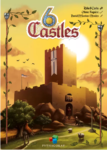







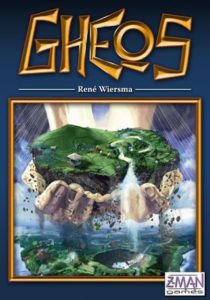
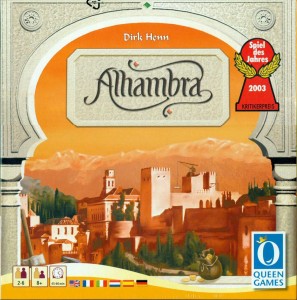
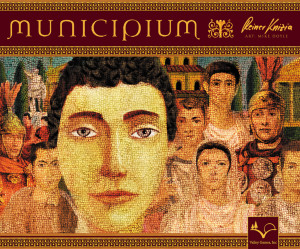

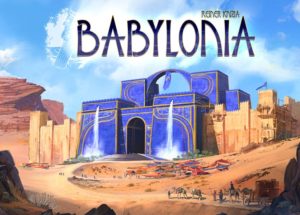
Sam says
A surprising game in that it's simple, but unintuitive enough that it can feel like a real head-scratcher. Every turn you're faced with multiple decisions: which tile to lay? How to orient it? Which action to take? Which resource to gather? Where to move your worker? Although seemingly inspired by the simpler Carcassonne, 6 Castles takes the tile-laying to a deeper tactical level: less a landscape, and more an abstract puzzle that looks like a landscape. In fact what it feels like is two games in one: the gathering and selling game and the area-control game. The latter seems more immediately alluring, but a castle surrounded by buildings can bring potentially enormous cash rewards. And what's key in either game is that you only have five discs and five workers - when to spend them is really critical. It's a game that's deceptively simple on one way, but incredibly complex in another.